Explore Mongolia Overland Tour 16 days
- Size:1 to 15 PAX
- Challenging
- Duration:15 nights/16 days
Overview
The greatest all-inclusive tour of Mongolia is provided by Mongol Horizon Travel, which allows visitors to see the country's stunning natural splendor. A memorable 16-day trip that includes city sightseeing, the enormous Genghis Khan Statue, experiences of the vast and diverse Gobi Desert, the charm and historical relics of central Mongolian green valleys, pristine rivers and lakes, and national parks of forested northern Mongolia. To visit and experience all of Mongolia's MUST SEES in a single expedition, even a month-long trip is insufficient, so do not worry. All the highlights are included in this package. An important aspect of this journey is learning about the unique nomadic lifestyle. Your nomadic hosts will prepare milk tea, dairy products, and Mongolian barbecue, and you will visit nomads and gain personal knowledge of nomadic life. Every day, you will travel through verdant valleys peppered with nomads' ger houses and past innumerable nomad animals on the expansive open steppes. In addition to iconic monuments and picturesque locations found in the three well-known Mongolian destinations, this experientially designed program offers perfect leisure activities including short hiking, extinct volcano climbing, horseback riding, and camel riding.
Date:
10 to25 June
28 June to 13 Jul
7 to 22 Jul
14 to 29 Jul
2 to 17 Aug
15 to 30 Aug
Includes:
- 2 nights in 3* hotel
- 13 nights in ger camps
- Van Transfer
- Horse & Camel riding
- Guide
- Entry fees to national parks and the museums
- Daily bottled water
- Meals as indicated in the itinerary.
- Departure airport transfer
Excludes:
- Items of personal nature
- International travel
- Bar bills, laundry
- Arrival airport transfer
- Travel & medical insurance
- Single supplements
- Gratiuty for the guides and drivers
Tour price:
- 2 Pax $3800
- 3 Pax $3100
- 4 Pax $2800
- 5 Pax $2700
- Group Tour $ 2680
- Single supplement $600
Detailed Itinerary
Day 1: Ulaanbaatar & Genghis Khan Statue
Day 1: Ulaanbaatar & Genghis Khan Statue
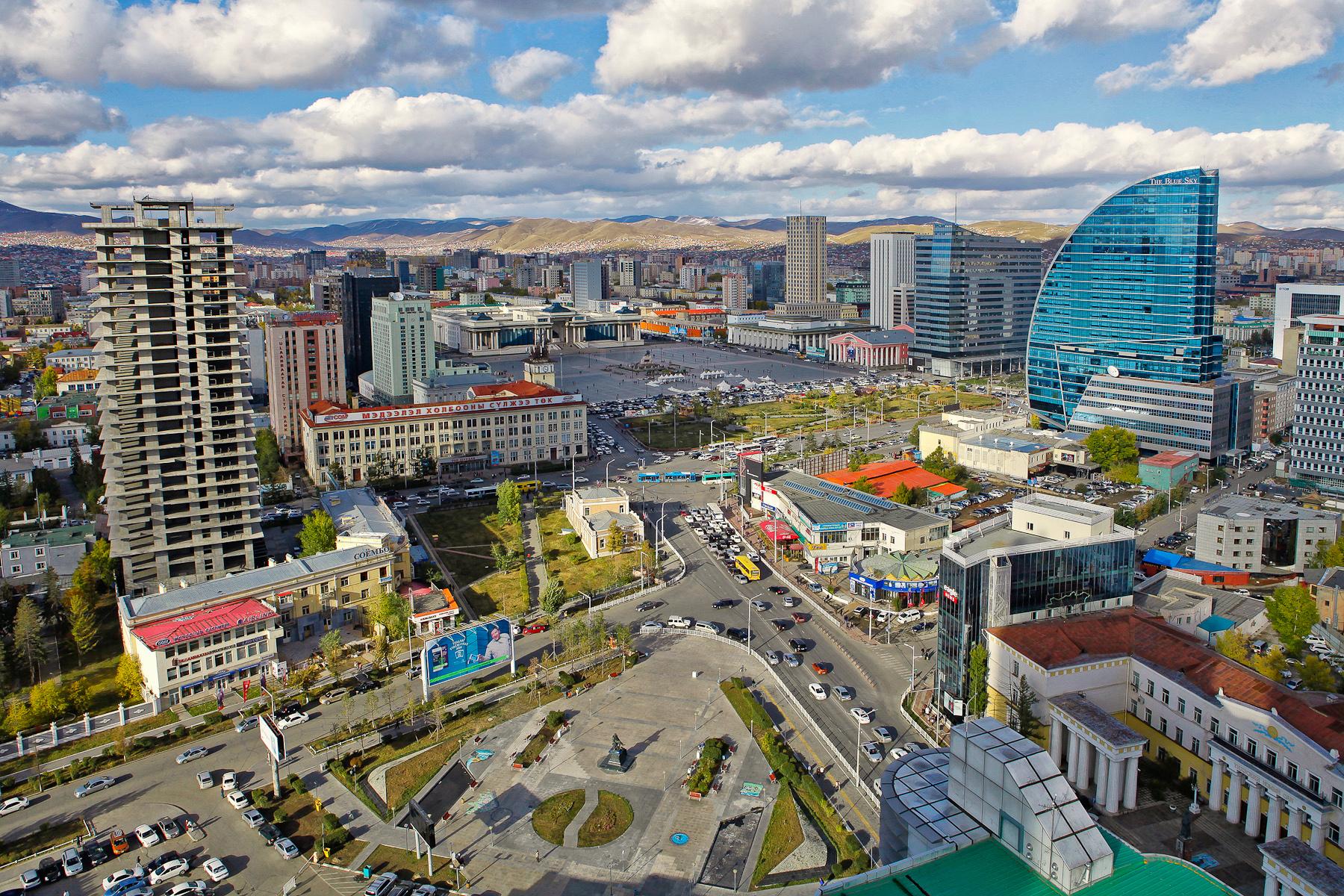
After meeting you at your lodging, your driver and guide will begin your Ulaanbaatar city sightseeing trip. After visiting Central Square, you will proceed to the spiritual and cultural center and energy hub, Gandantegchilen Monastery. Another noteworthy feature is a 26-meter-tall gilded statue of a Buddha (in Megjid Janrasag sum). Next, take in Ulaanbaatar's expansive vista from Zaisan Hill. Visit the enormous statue of Genghis Khan, which was erected in a historic location, after lunch. This 40-meter-tall statue is regarded as the world's highest equestrian statue. See the big traditional shoe, a whip, and the Khan Khentii Mountains, the birthplace of Genghis Khan.
Day 2: Tsagaan Suvarga
Day 2: Tsagaan Suvarga
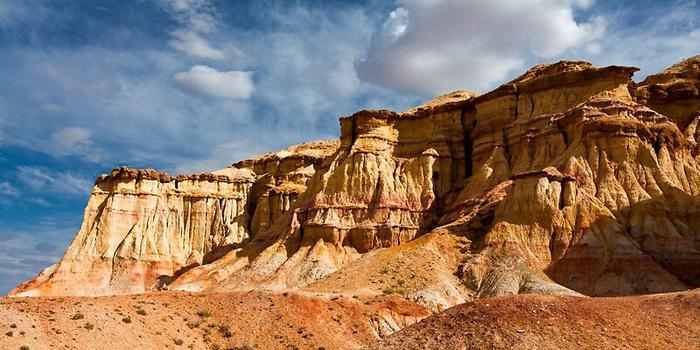
"White Stupa" is the meaning of Tsagaan Suvarga. It is among the Gobi's most well-known attractions. The bizarre natural phenomenon known as Tsagaan Suvarga is made up of enormous, colorful mud cliffs that resemble stupas, which are mound-like buildings that are home to relics. There is an opportunity to snap breathtaking pictures while hiking through the cliffs. Ger camp lodging; breakfast, lunch, and dinner
Day 3: Drive to Eagle Valley
Day 3: Drive to Eagle Valley
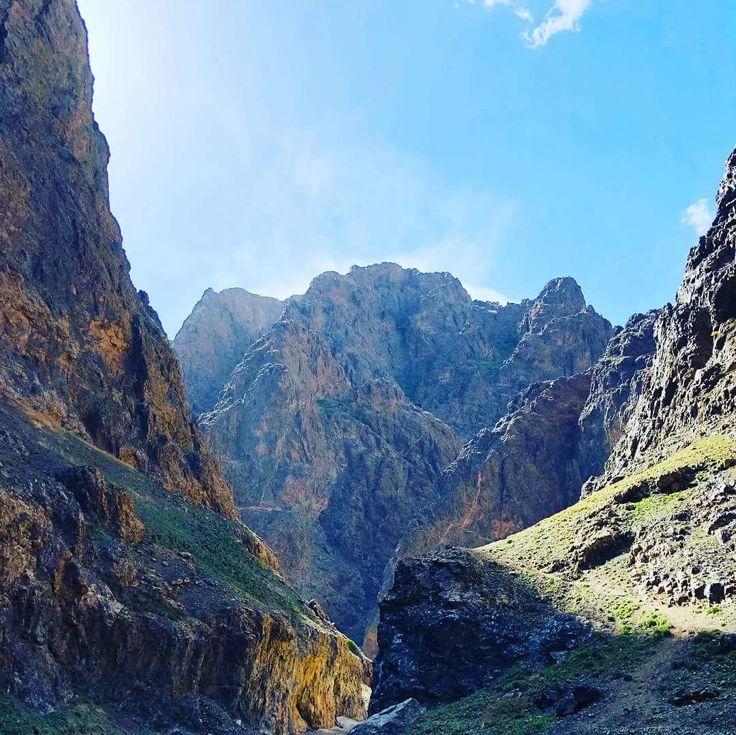
"Three magnificent mountains in the Gobi" is what the Gobi Gurban Saikhan signifies. Rich in biodiversity and picturesque locations, the Gobi Gurban Saikhan Mountain is a stunning national park in and of itself. The one that can be reached by driving is Yoliin Am/Eagle Valley. We will trek across the glistening valley into the depths of a steep rock canyon that does not receive any sunshine once our car has dropped us off at a designated parking location. It has ice until the end of June as a result. It takes two and a half to three hours to hike into the valley and return to the car. The valley is home to ibexes, golden eagles, and elusive wild sheep. Ger camp lodging; breakfast, lunch, and dinner
Day 4: Sand Dunes at Khongor and riding a two-humped camel
Day 4: Sand Dunes at Khongor and riding a two-humped camel
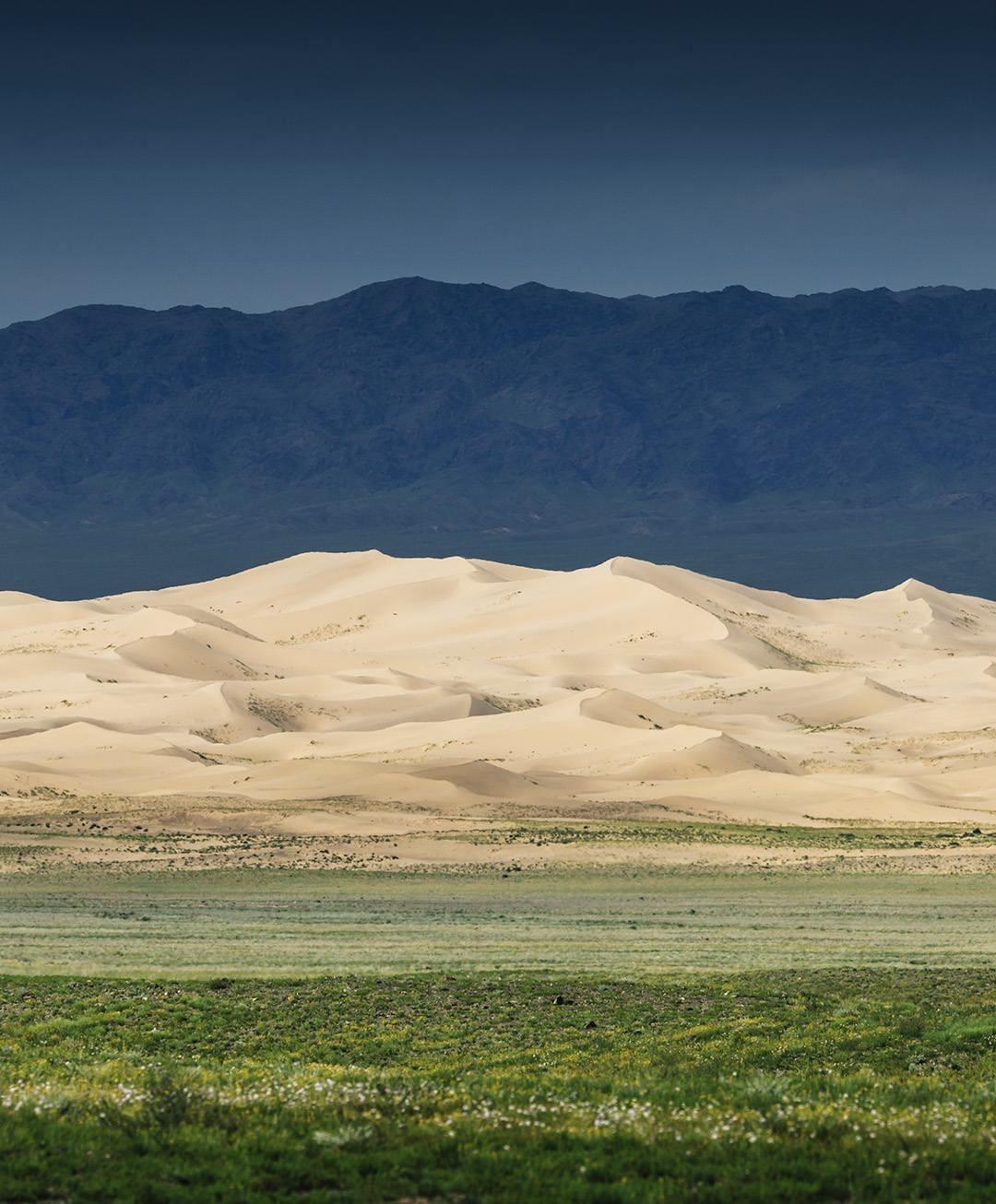
We will proceed to the biggest sand dunes, Khongor. We will hike along the verdant riverbank, climb sand dunes, visit a nomadic family, and ride camels for an hour after arriving at the sand dunes. If you are able to scale one of the tallest sand dunes, remember to spread the sand against the wind in a northerly direction to discover why the locals refer to the sand dunes as "Singing Sand." From the summit of the sand dunes, the views are breathtaking. Ger camp lodging; breakfast, lunch, and dinner
Day 5: Flaming Cliffs
Day 5: Flaming Cliffs
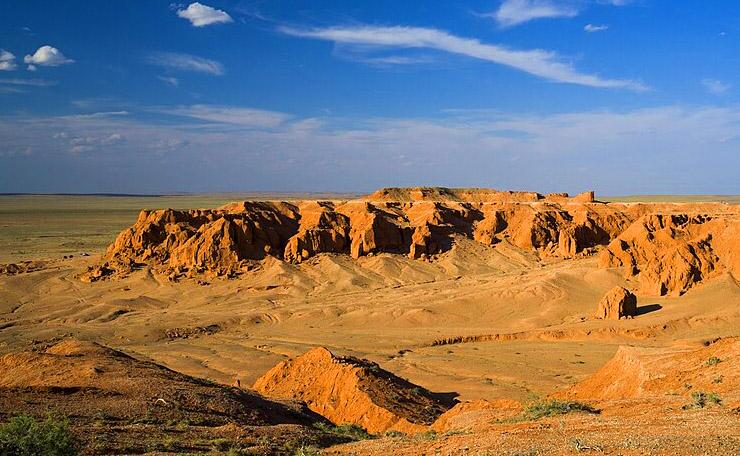
We will continue our journey to the Flaming Cliffs, where American explorer Roy Chapman Andrews discovered dinosaur remains, including the world's first dinosaur eggs. We will have fun visiting the "Bayanzag" Gobi tree grove and explore the cliffs in hopes of discovering dinosaur bones. This translates as "rich in saxaul trees." Only in the Gobi of Central Asia does this tree flourish. Ger camp lodging; breakfast, lunch, and dinner
Day 6: Travel across the vast steppes to Ongi Monastery.
Day 6: Travel across the vast steppes to Ongi Monastery.
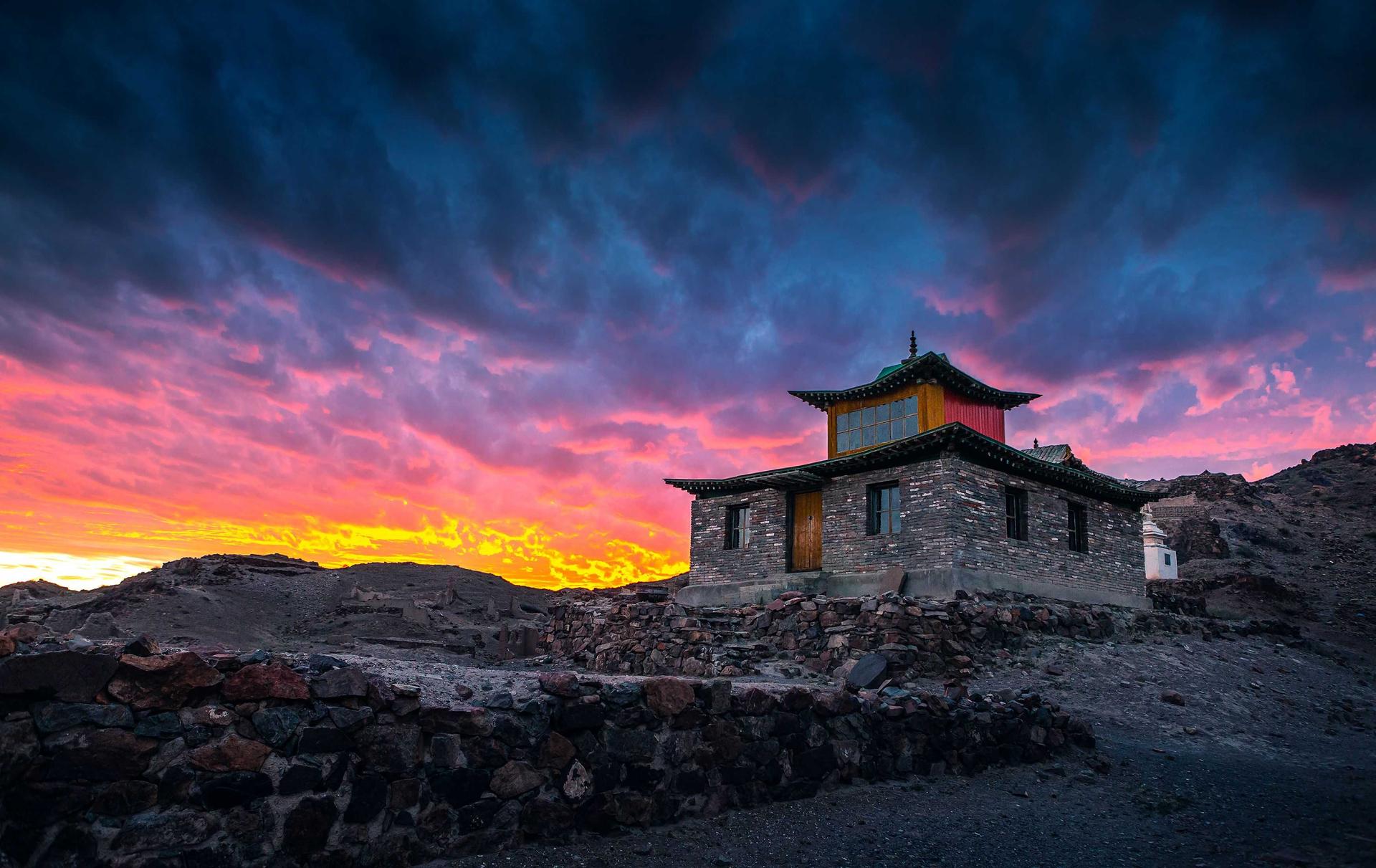
Travel 80 kilometers across the Ongi steppes after passing through slate mountains to reach Ongi Monastery, one of Mongolia's seven largest monasteries. On the banks of the Ongi River, encircled by the Gobi mountains, were two distinct monasteries with over thirty temples; however, the temples were demolished during the 1930s socialist purge. The monastic ruins now occupy a vast area. Explore the monastery remains, go to a new, active temple, a ger museum, and ascend a nearby mountain for sweeping views of the surroundings. Ger camp lodging; breakfast, lunch, and dinner
Day 7: Ancient Monastery Erdenezuu, Kharkhorin
Day 7: Ancient Monastery Erdenezuu, Kharkhorin

The excursion for today is conducted in the area where the Gobi desert gives way to the mountain steppes. In the 13th century, Chinggis Khaan's Great Mongol Empire had Kharkhorin, then known as Kharakhorum, as its capital. Karakorum was abandoned and later destroyed by Min forces in 1388 following the fall of the Empire and the relocation of the Mongolian capital to Beijing. Today, Kharkhorin town and the magnificent old monastery Erdenezuu coexist in the broad Orkhon River valley. Admire its magnificent architecture, see some priceless religious treasures in the monastery museum, and see relics from the ancient city at the Kharakhorum Museum. Ger camp lodging; breakfast, lunch, and dinner
Day 8: Discover more about the nomadic lifestyle in Arkhangai province and savor a traditional Mongolian barbecue.
Day 8: Discover more about the nomadic lifestyle in Arkhangai province and savor a traditional Mongolian barbecue.
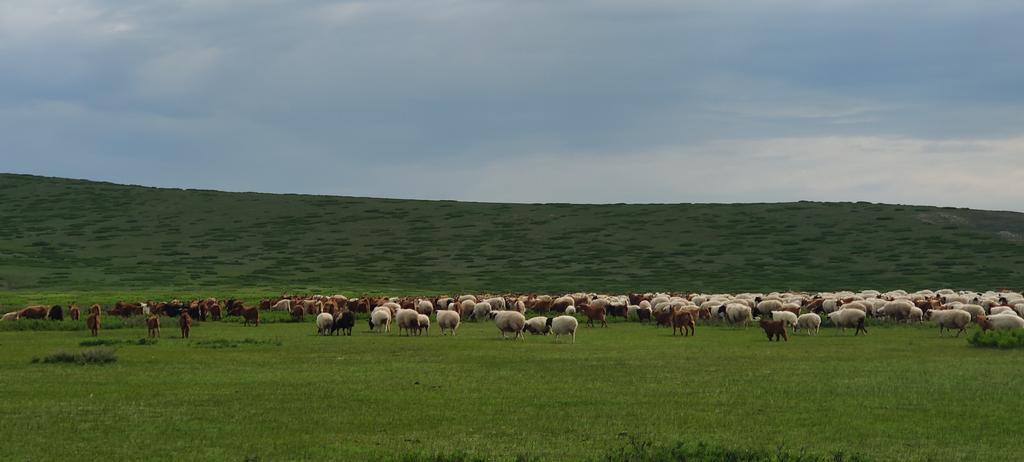
Discover more about the nomadic lifestyle in Arkhangai province and savor a traditional Mongolian barbecue. A brief trip of Tsetserleg town in Arkhangai province, featuring its fascinating local market, kicks off the day. Proceed to visit a nomadic family that herd yaks and enjoy a traditional Mongolian lunch of BBQ. Learn more about the northern Mongolian nomads' traditional way of life. After that, take a drive through Arkhangai's scenic surroundings, stopping at the Chuluut River Canyon. Late in the afternoon, reach the charming Khorgo Terkhiin Tsagaan National Park. Ger camp lodging; breakfast, lunch, and dinner
Day 9: Take a horseback ride and explore Khorgo Terhiin Tsagaan National Park.
Day 9: Take a horseback ride and explore Khorgo Terhiin Tsagaan National Park.
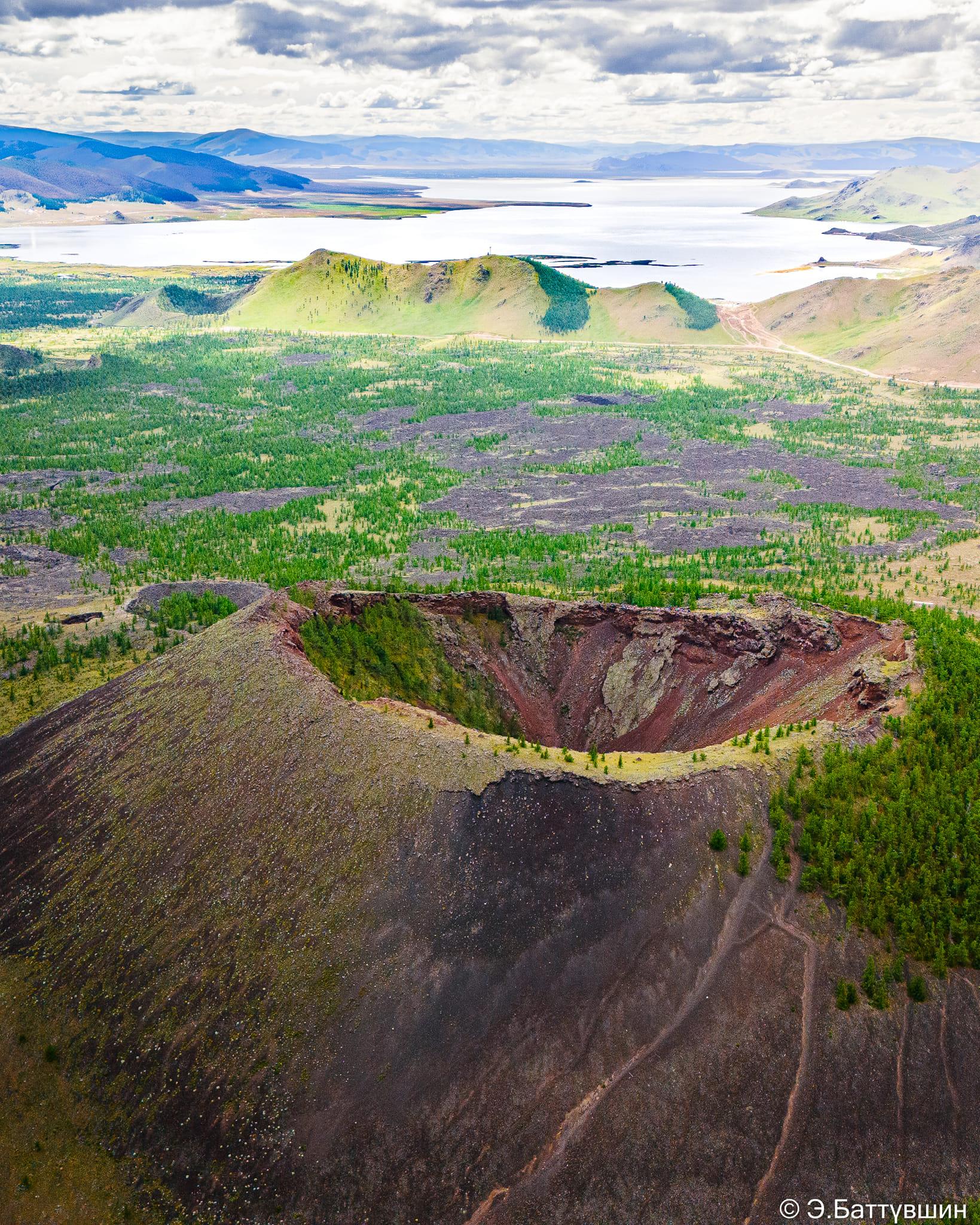
The purpose of the Khorgo Terkhiin Tsagaan National Park is to preserve the breathtaking alpine landscape and endangered plant and animal species. Although the National Park area contains a number of extinct volcanoes, Khorgo is the one that is easiest to reach. The freshwater lake Terkhiin Tsagaan was created after the north and south Terkh Rivers were blocked by lava flow from the volcanoes. The national park is renowned for its pastureland, where many nomads live with their animals, primarily yaks, and is incredibly beautiful, with the exception of the lake and volcano. You will use steps and pathways to ascend the volcano today. When you reach the summit, you will stroll around the volcano's rim and enjoy breath-taking views of the surroundings, including a small settlement and Terhkiin Tsagaan Lake from above. Visit a nomadic family to ride horses, explore caves, then head to the freshwater Lake Terkhiin Tsagaan in the afternoon. Ger camp lodging; breakfast, lunch, and dinner
Day 10: Spend the night close to Shine Ider
Day 10: Spend the night close to Shine Ider
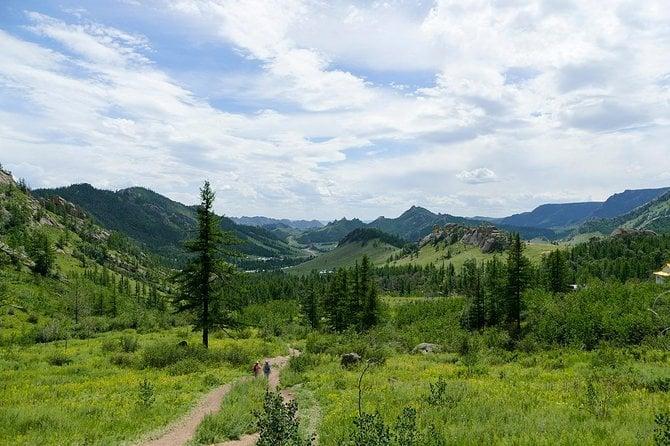
Today, while we drive and stroll around Terkhiin Tsagaan Lake's coast, we observe birds. There will be some historic relics from the past and a drive via a high mountain pass during the picturesque trip through a flower-carpeted mountain valley. Ger camp lodging; breakfast, lunch, and dinner
Day 11: See Khuvsgul Lake and deer stones.
Day 11: See Khuvsgul Lake and deer stones.
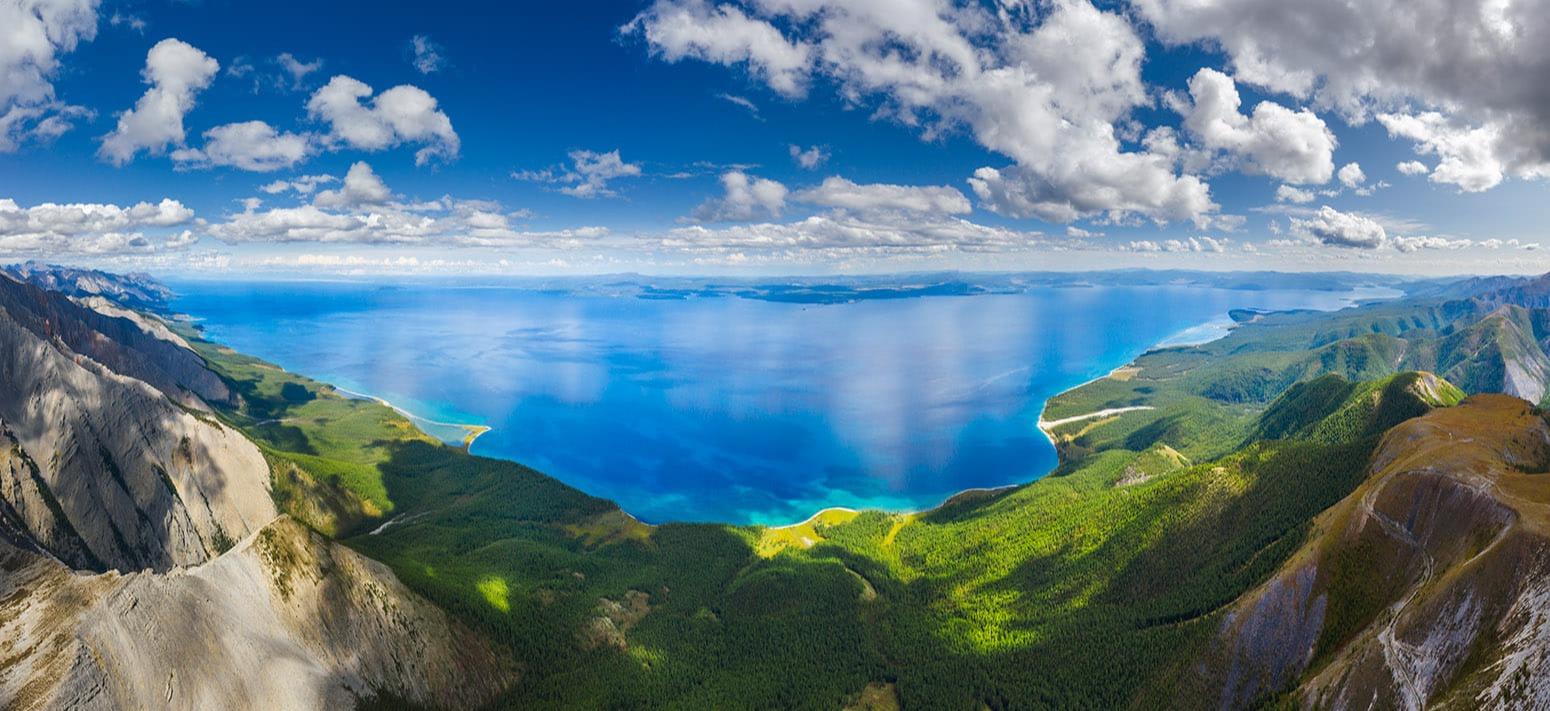
The trip continues to Lake Khuvsgul, the cleanest pure-water lake in the world. This lake, which is 136 kilometers long and 38 km wide, is located among magnificent sheer rock mountains at 1600 meters above sea level. There is a lot to offer visitors to the immaculate lake and its environs. We investigate historic deer stones that are found all over Central Asia. Of the approximately 600 deer stones discovered in Central Asia, 500 were discovered in Mongolian territory. The earliest human monuments are deer stones, most of which date to the Bronze Age, but some date from the 13th to the 9th century BC. Standing stones that had been renovated had imaginative carvings of the sun, moon, belts, knives, and leaping deer. You will have free time after checking into a ger camp that is ideally situated on the lake's western bank. Ger camp lodging; breakfast, lunch, and dinner
Day 12: Khuvsgul Lake Horseback Riding Tour and Reindeer Family Visit
Day 12: Khuvsgul Lake Horseback Riding Tour and Reindeer Family Visit
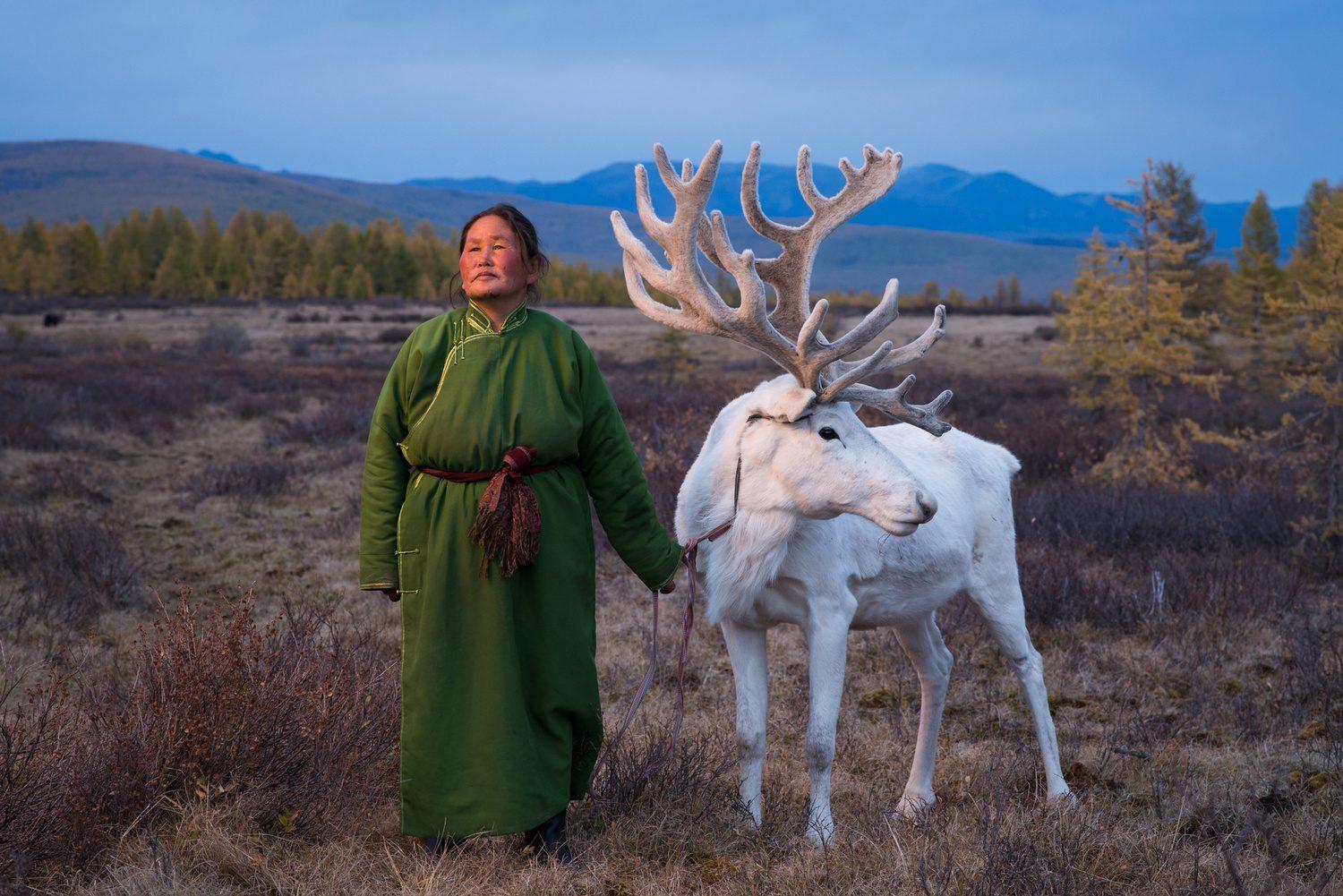
The taiga forest's depths are home to the Reindeer Tsaatan people. The main source of their income is a small number of reindeer. To augment their income, some families of reindeer relocate from the Taiga highlands near the lake throughout the summer. We will go see the reindeer folks and take photos with them after breakfast. The rest of the day will be spent riding horses around the lake's beach and climbing a nearby mountain to get a higher view of the lake before we travel back to the ger camp for lunch. Ger camp lodging; breakfast, lunch, and dinner
Day 13: Uran Togoo extinct volcano
Day 13: Uran Togoo extinct volcano
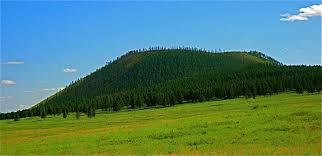
Eight hundred thousand years ago, the Urantogoo volcano went extinct. There is a tiny lake and trees growing on the mountain's northern slope and inside the crater. After a strenuous trek, the mountain's summit is reachable, and the breathtaking view is well worth the effort. Ger camp lodging; breakfast, lunch, and dinner
Day 14: Amarbayasgalant Monastery
Day 14: Amarbayasgalant Monastery
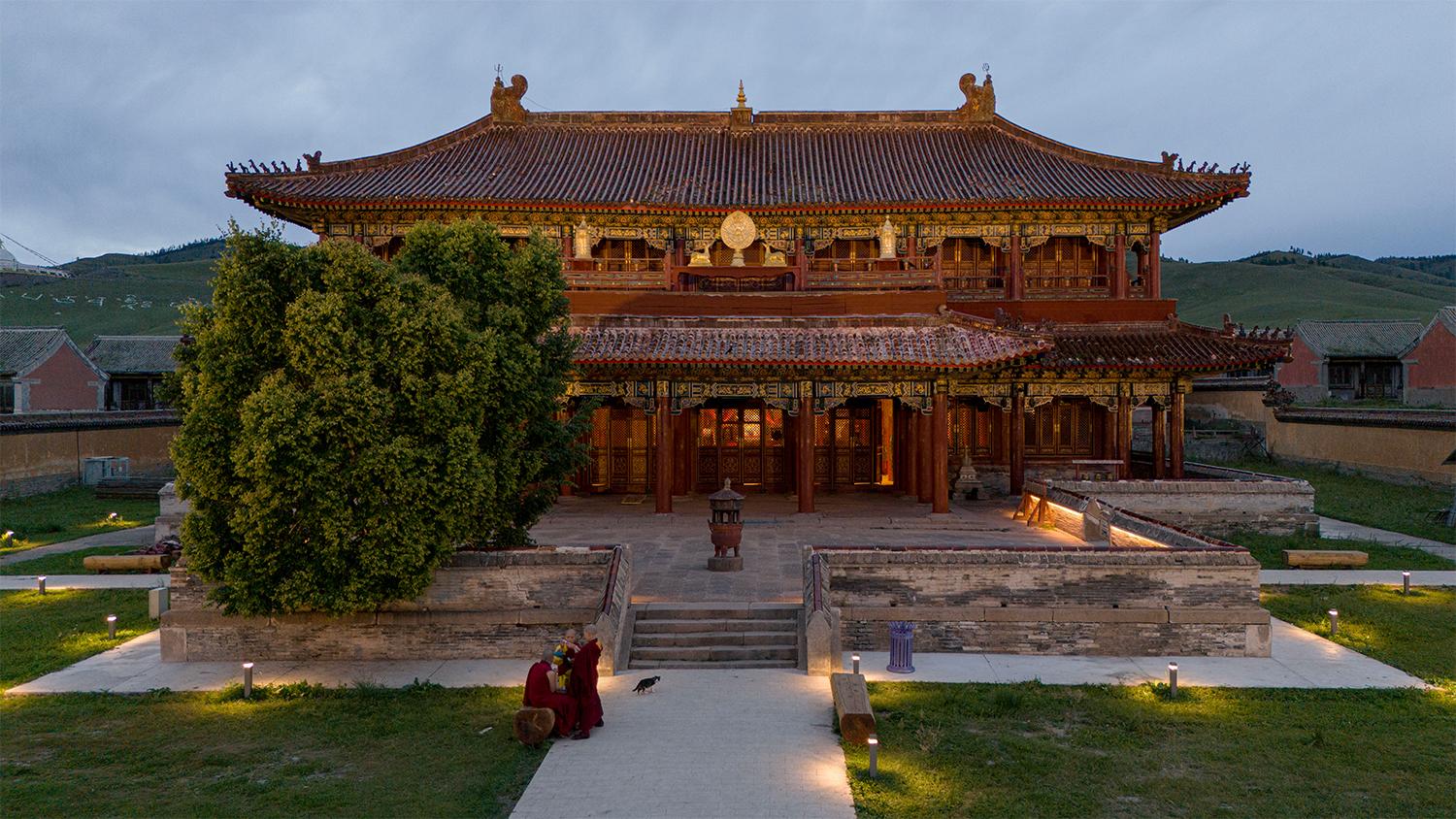
We will go through Erdenet, a central town in Bulgan province and the site of a copper mine, on our way to Amarbayasgalant monastery. The second-largest and most beautiful monastery in terms of architectural is Amarbaysgalant. Between 1727 and 1736, it was constructed in the Chinese and Mongolian styles. Huge Buddha statues erected atop the mountains are part of the monastery's afternoon tour. Ger camp lodging; breakfast, lunch, and dinner
Day 15: Return to Ulaanbaatar
Day 15: Return to Ulaanbaatar
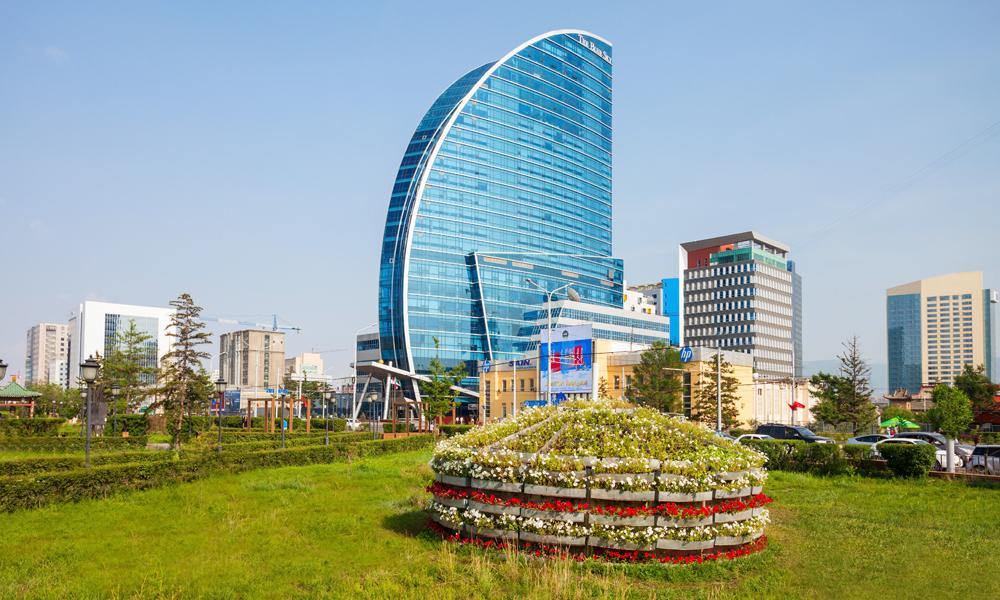
Today marks the end of your time in Mongolia's distinctive and remarkable countryside. After arriving in Ulaanbaatar, visitors settle into a hotel and spend a leisurely afternoon. Hotel; breakfast and lunch
Day 16: Transfer to the airport
Day 16: Transfer to the airport
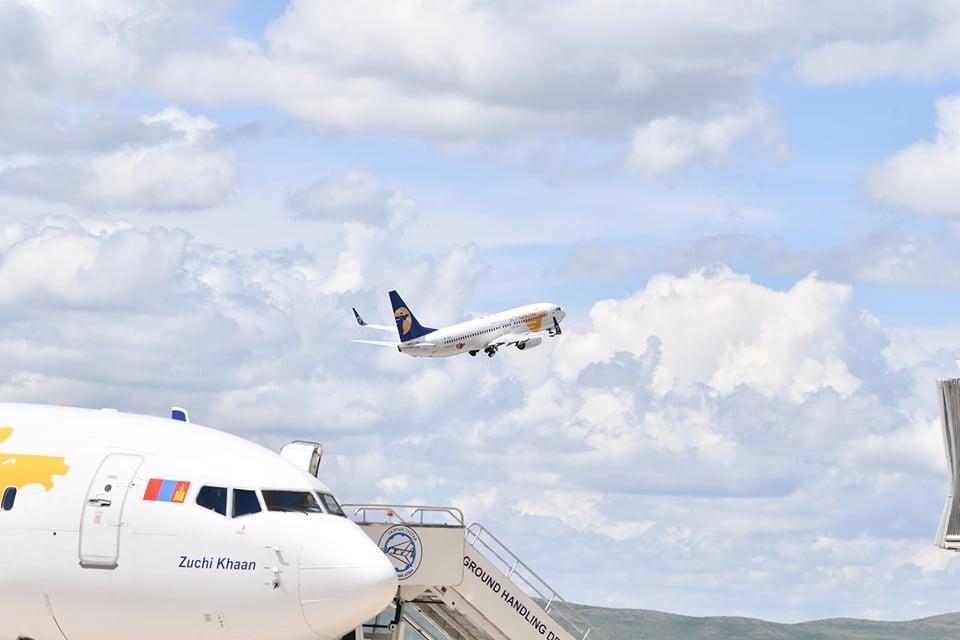
Our driver will transfer you to the airport. Meals: Breakfast
Backgrounds
Background
Are you a good fit for the Explore Mongolia tour?A tour of the most fascinating sights and picturesque regions of the stunning and distinctive Gobi Desert, the hilly steppes of central Mongolia, the mountainous and forested northern Mongolia, and its well-known landmark, Khuvsgul Lake, is available. There are not any physically taxing activities on the tour. Long drives over shifting terrain are a must while visiting Mongolia, which offers breathtaking vistas of the boundless steppes. The driving time on this tour has been kept to a minimum; daily driving periods range roughly from 4.5 to 6 hours. Day 2 is the longest driving day, lasting roughly 7-8 hours, including a lunch break. With the assistance of your guide and local guides, the agenda includes a few easy activities including 1-2 hours of horseback riding, 1-1 hour of mild trekking, and 1 hour of camel riding. Climbing the high sand dunes in the Gobi Desert may be the most difficult part of the tour; however, it is not required, and guests may choose to ascend one of the lower sand hills instead. Because the area is 2000 meters above sea level, ascending the Khorgo volcano on Day 9 may be a little taxing for some people, but the ascent is quick and easy.
Meals:
The itinerary specifies which meals are included in the tour. Both European and Mongolian cuisine are served in ger camps in the countryside. The primary component of meals, meat is served with salads, soups, and vegetables for lunch and dinner. Traditional Mongolian dishes will have more beef. Tea or coffee, bread, jam, butter, eggs, and sausage are the usual breakfast items. At some of the ger camps, breakfast consists of cereals, pancakes, cheese, cookies, and more. Salads, Mongolian soups, a main course (rice, pasta, vegetables, beef, mutton, chicken, or fish from lakes or rivers), dessert, and tea are served for lunch. Dinner will consist of salads, a main meal, a dessert, and tea. You will sample real Mongolian food with nomads. It is not traditional in Mongolian culture to serve different kinds of food at the same time. Please let us know in advance if you are vegetarian or have any other dietary requirements, and we will adjust our plans accordingly. Two 0.5L bottles of water will be provided each day. On request, one larger bottle (1.5 liters) of water can be provided in place of two smaller bottles.
Accommodation:
Travel to Mongolia is heavily influenced by the time of year, and ger camps for seasonal lodging are available from May 15 to September 20. The ger camps are partially open in other months and shuttered in the winter. We host our clients in the top hotels in Ulaanbaatar and in rural ger camps.
Guides:
English-speaking guides make up the majority of our company's guides. Additionally, our advisors are fluent in Japanese, French, German, and Spanish. The majority of them grew up in rural Mongolia and are all amiable and helpful. As a result, they have at least three years of guiding experience and are well-versed in all facets of Mongolia. You will receive assistance from a native guide while riding the camel.
Transportation:
In terms of land transportation, the majority of our trips were made for four-wheel drive Japanese off-road vehicles operated by skilled, amiable, and informed mechanic-drivers.
What time of year is ideal for the Explore Mongolia tour?The best time to travel to Mongolia is from May 15 to September 15. The weather will be pleasant and mild throughout this time. Expect a great deal of weather and altitude variation. The Gobi, or southern Mongolia, is the warmest section of the country and is quite low in elevation (1050 m to 1350 m where we travel). The average yearly temperature is 2–10°C warmer than in other parts of Mongolia. However, because Mongolia sits at least 700 meters above the neighboring Siberian plains and Chinese territory, you should not expect warm weather throughout your vacation, even whether you go during the summer or during other times of the year. In central and northern Mongolia, elevations between 1400 and 1780 meters above sea level are the most common. A little portion of the path is higher than 2100 meters. As a result, there are significant hourly, midday, and nighttime weather variations. In the evenings and at night, the temperature lowers by 10 to 20 degrees Celsius. The months of May, September, and October are characterized by chilly winds and sporadic snowfall, which causes temperatures to plunge below zero. Particularly in central Mongolia's northern regions. The Gobi's average monthly temperature is +20°C, with daytime highs of 30°C and nighttime lows of +8°C in late May, June, and September. July may be the warmest or the wettest month. The average daytime temperature in July and early August is +25°C, the highest recorded temperature is +40°C, and the lowest recorded temperature is +12°C, though some nights may be hot. If it rains, the temperature may drop significantly. As you move farther north, you will notice that the temperature drops and gets colder in the mornings, evenings, and nights.
Book this tour
You may also like
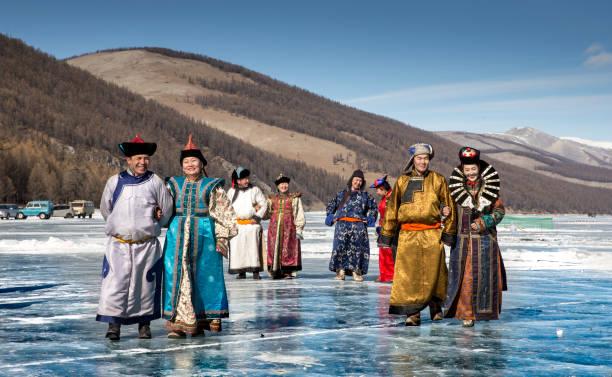
- 1 to 15 PAX
- 9 nights/10days
- Moderate
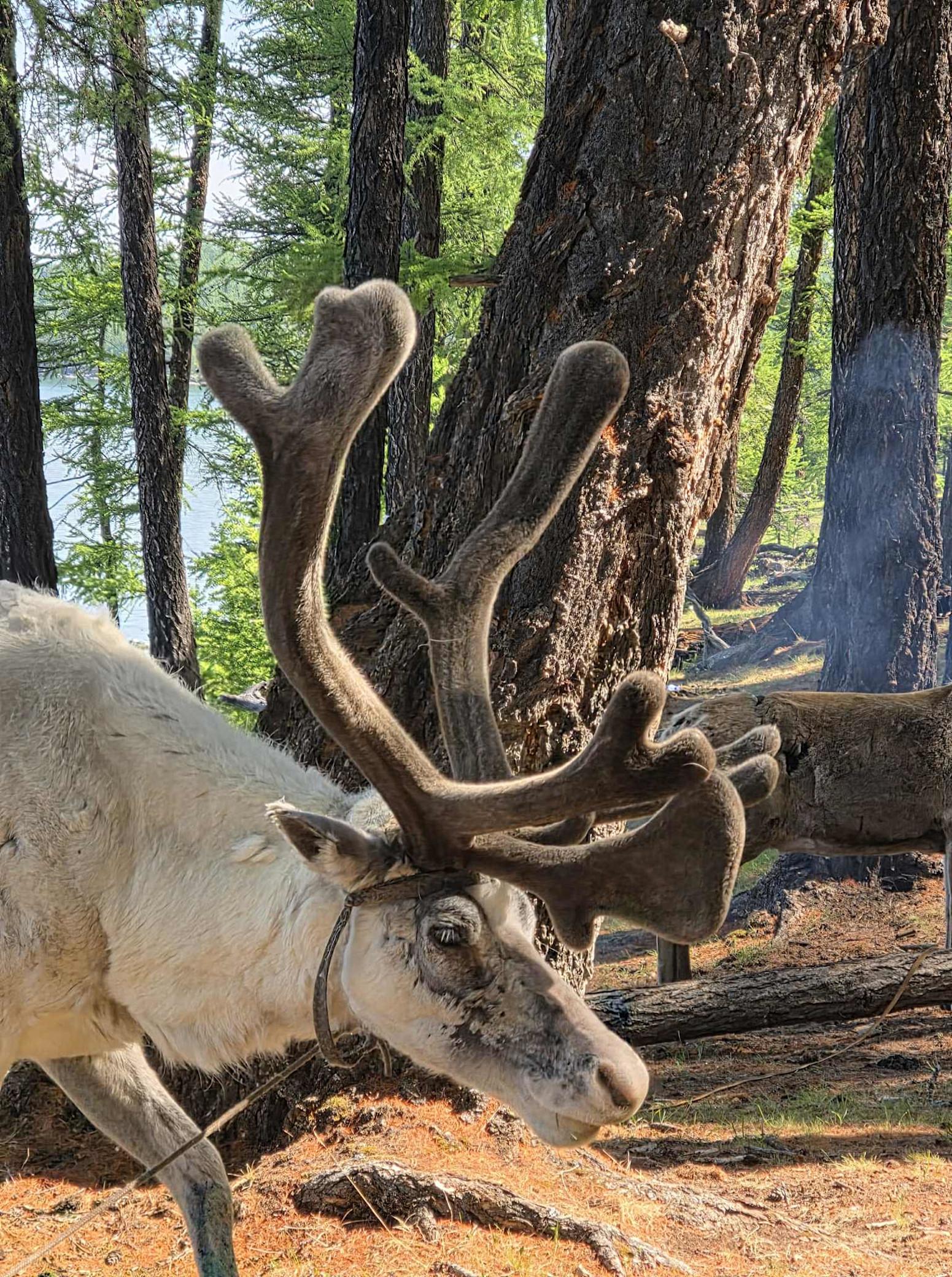
- 1 to 15 PAX
- 9 days/8 nights
- Moderate
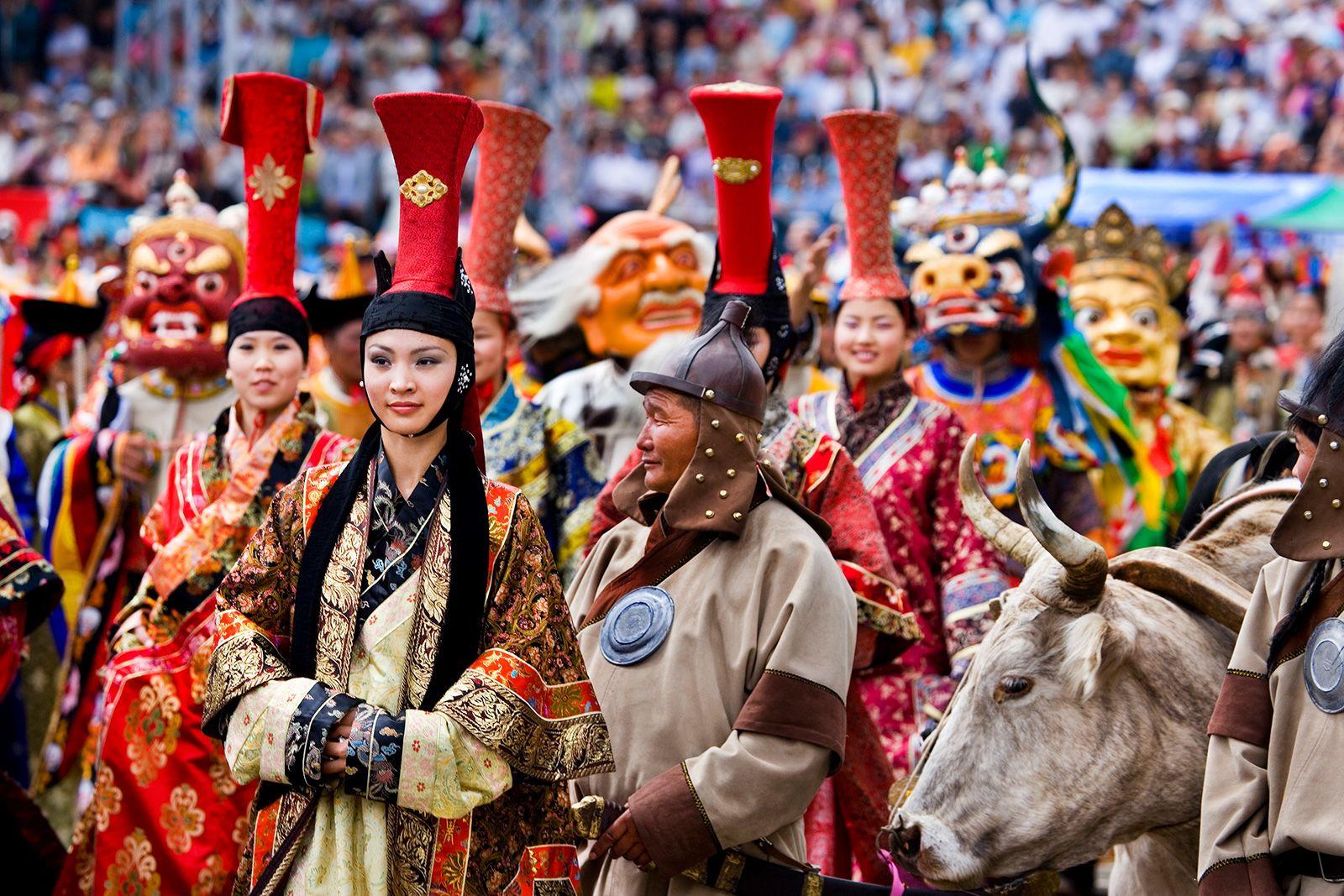
- 1 to 15 PAX
- 15 nights/16 days
- Moderate
Our Customers' Experience
We cherish the wonderful memories of our customers, as each story inspires us to improve and create even better experiences for everyone.
